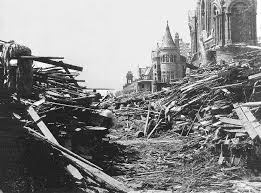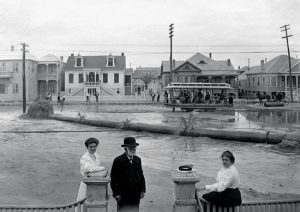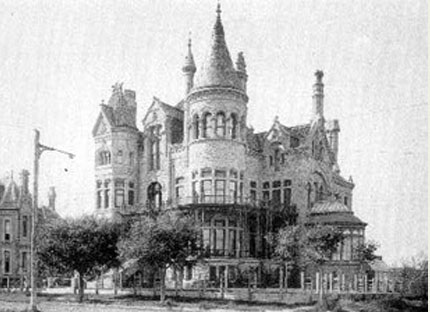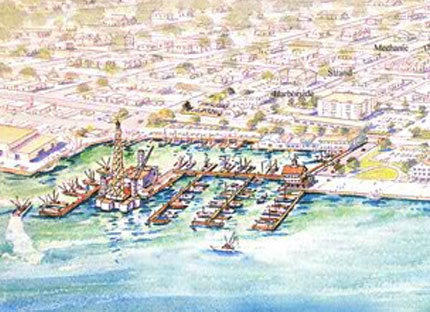This island city is named after Bernardo de Galvez, the Spanish Colonial governor who ordered the first survey of the Texas Gulf Coast in 1786. The surveyor, Jose de Evia, named Galveston Bay in honor of the governor, and the island was later given the same name. Ironically, Bernardo de Galvez never visited the island.
The first inhabitants in Galveston history were the Karankawa Indians in the 16th century. Galveston Island’s first noted visitor was Cabeza de Vaca, the Spanish explorer, who landed in 1528. Its first European settler was French “privateer” Jean Lafitte. Lafitte built a small community, Campeche, on Galveston Island in 1817 and, for a decade, used it as a base from which to raid the Spanish merchant ships that frequented the Gulf. His treasures are still rumored to be buried somewhere on the Island.
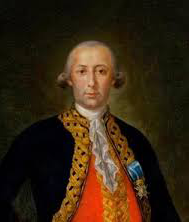
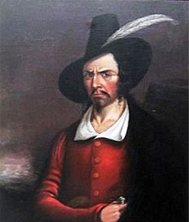
The first American colonists arrived in 1827. In 1836, the same year that Texas gained its independence from Mexico and became a republic, the City of Galveston was born.
Canadian fur trader, Michel B. Menard purchased seven square miles of land for $50,000 and that land became the City of Galveston. Over the years, the island was battered by a number of tropical storms, yellow fever, and the Civil War, but the city continued to grow. With its natural seaport leading to business opportunities in shipping, imports, and rail, Galveston’s population boomed. Galveston’s Immigration Station was second only to Ellis Island. By 1885, it was the largest and richest city in the state. Avenue B, known as The Strand, became the banking, retail, and shipping hub of the Gulf Coast and was known throughout the country as the Wall Street of the Southwest. Over 60 percent of the goods shipped in the Southwest came through Galveston’s port during the island’s golden era.
The history of Galveston, TX also reveals it as a cultural center of the state. It was home to the first opera house in Texas, The Grand 1894 Opera House, which hosted numerous international stars. Galveston also had the state’s first post office, naval base, hospital, medical college, grocery store, gas lights, telephone, golf course, public library, daily newspaper, and Chamber of Commerce. The island was riding the tide of prosperity that showed no signs of slowing when the worst recorded natural disaster ever to strike North America occurred on September 8, 1900. Poor communication and a lack of equipment to monitor storms resulted in a little warning for the residents of the Texas Gulf Coast. Few of Galveston’s 38,000 residents had evacuated the city before the bridges to the mainland fell.
The swelling seas and high winds covered the island from Gulf to Bay.
The resulting storm surge, which reached a depth of 15 feet in parts of the city, took the lives of an estimated 6,000 to 8,000 people in Galveston. High winds and high water destroyed one-third of the city including 2,636 houses and 1,500 acres of shoreline. Property damage was estimated to be between $20-30 million at that time. The force of the storm pushed buildings on the Gulf side into the center of the island, creating a spontaneous dam. Buildings and residents that survived the Great Storm did so because a wall of rubble 30-feet high shielded them from the worst waves.
Despite the horrific loss, islanders didn’t delay in rebuilding the island and approved a plan to rebuild the city. In the succeeding years, Galvestonians witnessed the construction of a six-mile-long seawall, seventeen feet above low mean tide. The sand was pumped from the Gulf floor and Offats Bayou to raise the grade throughout the city.
Behind the seawall, all structures, including offices, homes, and churches, had to be raised to this new elevation. During the grade-raising, homes were jacked up, and dredges poured four to six feet of sand beneath them.
Residents used elevated wooden sidewalks to walk through town during the eight years it took to complete the raising of 500 city blocks.
Construction of the seawall and grade-raising were phenomenal feats of engineering and incredibly expensive even by today’s standards. The grade-raising cost Galveston taxpayers and individual homeowners $8 million. The 10.4-mile seawall cost almost $14.5 million in 1904. Building the seawall saved the city from both the devastation of future hurricanes and from being a memory of Texas history. Galveston quickly gained notoriety across the country for the efficiency and determination it displayed while building the seawall. The engineering feat was noted as an example of how a city should respond after a disaster such as the 1900 hurricane. While Galveston was rebuilding from the Storm in 1900, Houston was growing. Houston dredged a ship channel in 1911 and created a deep water port to compete with the Port of Galveston. Houston’s ship channel soon became a preeminent port of Texas and surpassed Galveston’s annual tonnage. However, Galveston overcame that obstacle and turned to other businesses and commerce to maintain its economic base.
Lavish hotels and bathhouses were built along the waterfront making Galveston a playground for the wealthy and grand homes were built in Galveston’s neighborhoods. The Strand and downtown Galveston were intact after the 1900 Storm but remained in disrepair until a renewed interest in the area began over thirty years ago. The Strand National Historic Landmark District received national recognition for its Victorian architecture and the District has set the standard for historical restoration in other communities. While its port is still active today, the island economy has diversified by adding media research, insurance, education, and tourism playing host to 7.5 million visitors per year. The west end of the island has grown considerably and beach-front communities continue to be built despite the ever-looming threat of hurricanes. The city has two state university branches and one community college. The University of Texas Medical Branch is Galveston’s single largest employer.
Today, Galveston can boast of more than a dozen historic museums and properties open to the public, miles of beaches, an aquarium and rainforest enclosed in glass pyramids at Moody Gardens, boat tours of the harbor and air tours of the island.
Downtown Galveston also offers seasonal outdoor movie viewings, live concerts, seasonal farmer’s markets, numerous festivals, and holiday parades. Additionally, two live theaters showcase the top talent in Broadway musicals and award-winning plays and Galveston’s art district features local and national artists.
On September 13, 2008, Hurricane Ike devastated the Texas Gulf Coast with a direct hit to Galveston and nearby Houston. Despite the ravages of Ike, Galveston Island has made a strong recovery both downtown and citywide. Hurricane Ike was the third costliest hurricane to make landfall in the United States. Ike’s storm surge exceeded Galveston’s 17-foot seawall and flooded businesses and homes in the lower portions of the island, including The Strand National Historic Landmark District and other downtown areas. In response to the hurricane, many businesses, including Mitchell Historic Properties, have made extensive renovations and improvements to their properties with flooding in mind and the goal of shortening recovery time in the case of future storms.
